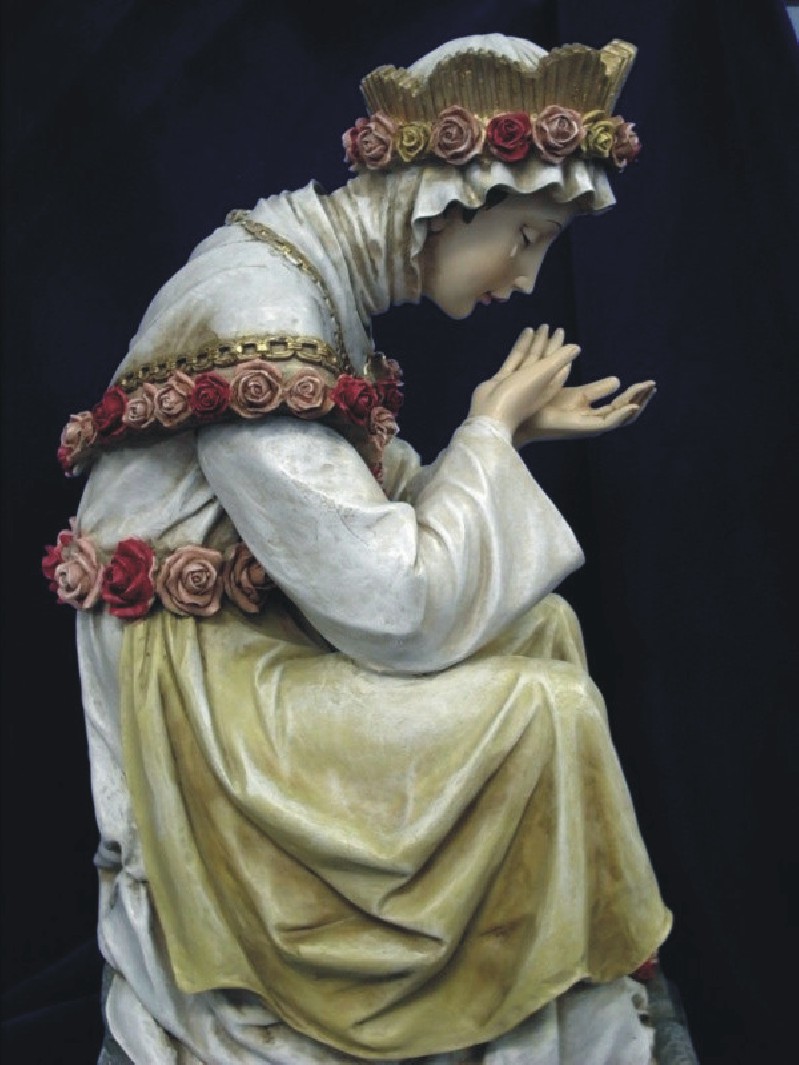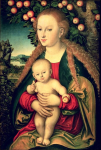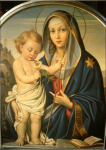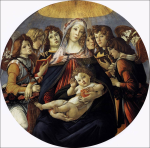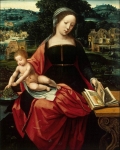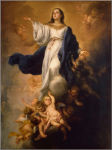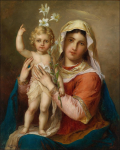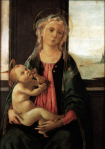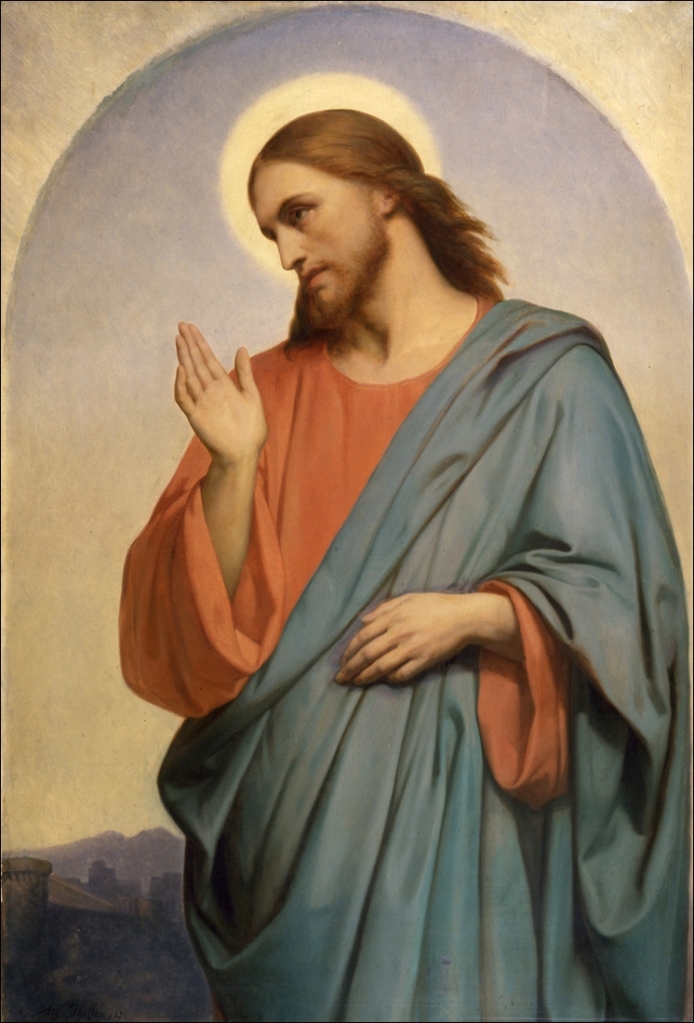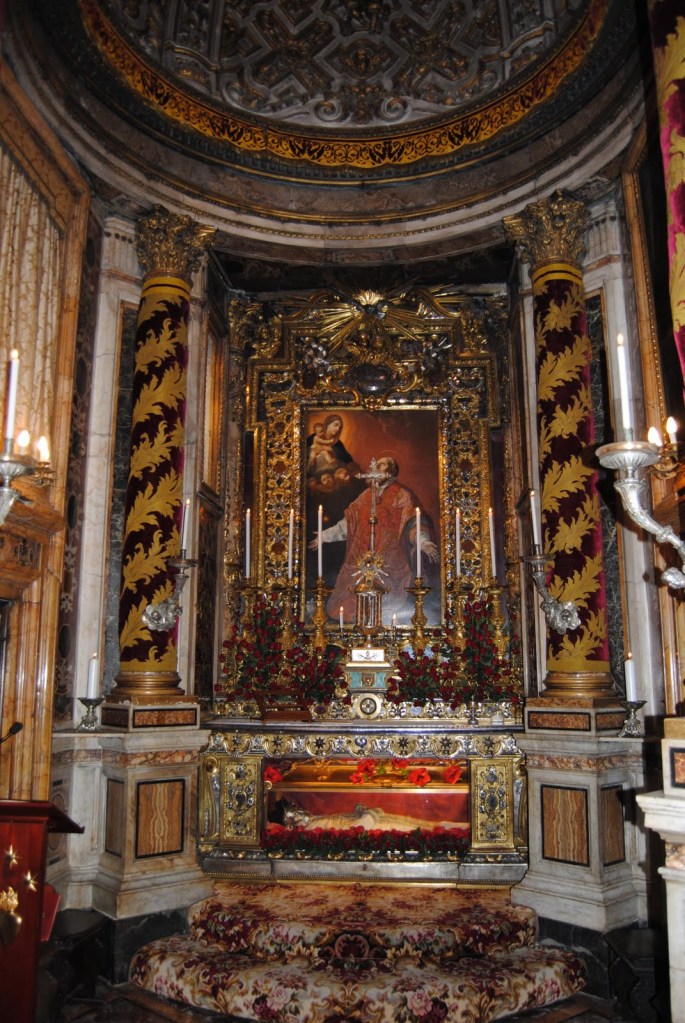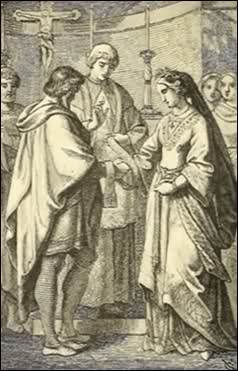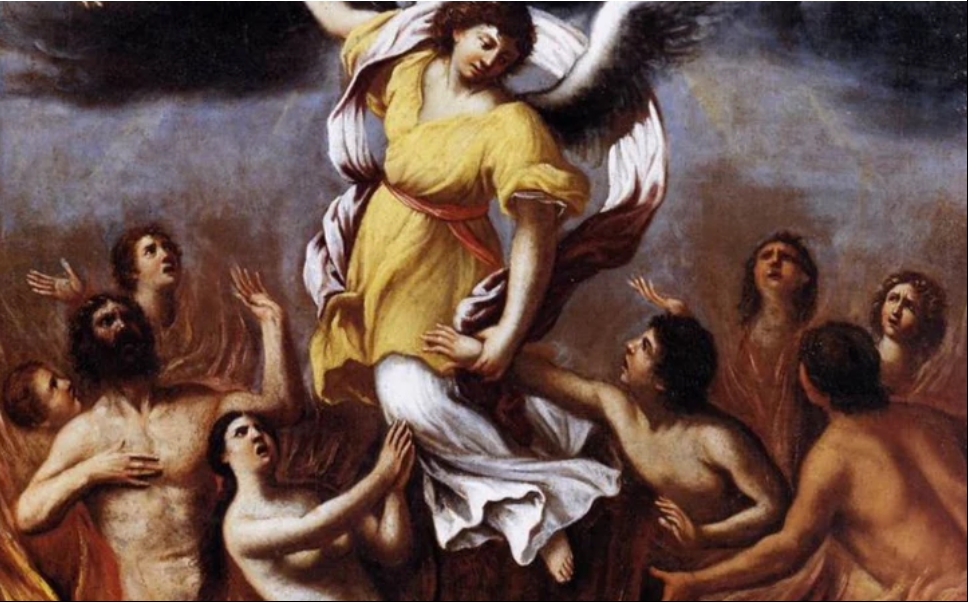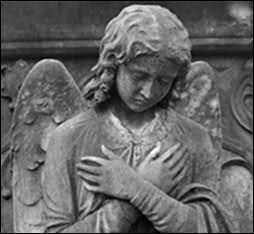
Chaplet of Saint Michael the Archangel Praying the chaplet is said to provide the assistance from Saint Michael the Archangel and the company of one angel from each of the nine celestial choirs when approaching Holy Communion. In addition, for those who would recite the Chaplet daily, he promised his continual assistance and that of all the holy angels during life. Praying the chaplet is also believed gradually to defeat demons and grant a Pure Heart thus, delivering from Purgatory. These blessings extend to the direct family.
The chaplet begins with an Act of Contrition.
Then there are nine salutations, one for each choir of angels, each one followed by an Our Father and three Hail Marys. These are followed by four Our Fathers, honoring Saints Michael, Gabriel, Raphael and the Guardian Angel. The chaplet concludes with a prayer to Saint Michael.
The Archangel Michael promised to whoever would pray this Chaplet:
That he would send a chosen angel from each angelic choir to accompany the devotees at the time of Communion.
To those who recite these nine salutations, every day:
That they will enjoy his continued assistance during this life and also after death, in purgatory. They will be accompanied by all the angels and will be, with all their loved ones and relatives freed from Purgatory.
Pope Pius IX granted the following Indulgences to those who pray the chaplet: Partial indulgence, to those who pray this Chaplet with a contrite heart. Partial indulgence, each day to those who carry the Chaplet with them and/or kiss the medal of the Holy Angels that hangs from it. Full indulgence, to those who pray it once a month, the day they choose, truly contrite and confessed, praying for the intentions of their Holiness. Full indulgence, with the same conditions, in the feasts of the Apparition of St Michael the Archangel (May 8); the feast of the Archangels Michael, Gabriel and Rafael (September 29); and on the day of the Holy Guardian Angels (October 2).
How to Pray the Chaplet of Saint Michael the Archangel
Act of Contrition
O my God, I am heartily sorry for having offended Thee and I detest all my sins because I dread the loss of Heaven and the pains of hell, But most of all because they have offended Thee, my God, Who art all good and deserving of all my love. I firmly resolve, with the help of Thy grace, to confess my sins, to do penance, and to amend my life. Amen.
Sign of the Cross
In the name of the Father, and of the Son, and of the Holy Spirit. Amen.
The chaplet begins with the following invitation: O God, come to my assistance. O Lord, make haste to help me. Glory be to the Father, to the Son, and to the Holy Spirit, as it was in the beginning, is now and will be forever, time without end. Amen.”
(Say one Our Father and three Hail Marys after each of the following nine salutations in honor of the nine Choirs of Angels)
1. By the intercession of St. Michael and the celestial Choir of Seraphim may the Lord make us worthy to burn with the fire of perfect charity. Amen. (Our Father, Three Hail Marys)
2. By the intercession of St. Michael and the celestial Choir of Cherubim may the Lord grant us the grace to leave the ways of sin and run in the paths of Christian perfection. Amen. (Our Father, Three Hail Marys)
3. By the intercession of St. Michael and the celestial Choir of Thrones may the Lord infuse into our hearts a true and sincere spirit of humility. Amen. (Our Father, Three Hail Marys)
4. By the intercession of St. Michael and the celestial Choir of Dominions may the Lord give us grace to govern our senses and overcome any unruly passions. Amen. (Our Father, Three Hail Marys)
5. By the intercession of St. Michael and the celestial Choir of Virtues may the Lord preserve us from evil and falling into temptation. Amen. (Our Father, Three Hail Marys)
6. By the intercession of St. Michael and the celestial Choir of Powers may the Lord protect our souls against the snares and temptations of the devil. Amen. (Our Father, Three Hail Marys)
7. By the intercession of St. Michael and the celestial Choir of Principalities may God fill our souls with a true spirit of obedience. Amen. (Our Father, Three Hail Marys)
8. By the intercession of St. Michael and the celestial Choir of Archangels may the Lord give us perseverance in faith and in all good works in order that we may attain the glory of Heaven. Amen. (Our Father, Three Hail Marys)
9. By the intercession of St. Michael and the celestial Choir of Angels may the Lord grant us to be protected by them in this mortal life and conducted in the life to come to Heaven. Amen. (Our Father, Three Hail Marys)
(Four Our Fathers. One in honor of each of the following leading Angels: St. Michael, St. Gabriel, St. Raphael and our Guardian Angel.)
O glorious prince St. Michael, chief and commander of the heavenly hosts, guardian of souls, vanquisher of rebel spirits, servant in the house of the Divine King and our admirable conductor, you who shine with excellence and superhuman virtue deliver us from all evil, who turn to you with confidence and enable us by your gracious protection to serve God more and more faithfully every day.
Pray for us, O glorious St. Michael, Prince of the Church of Jesus Christ, that we may be made worthy of His promises.
Almighty and Everlasting God, Who, by a prodigy of goodness and a merciful desire for the salvation of all men, has appointed the most glorious Archangel St. Michael Prince of Your Church, make us worthy, we ask You, to be delivered from all our enemies, that none of them may harass us at the hour of death, but that we may be conducted by him into Your Presence. This we ask through the merits of Jesus Christ Our Lord. Amen

